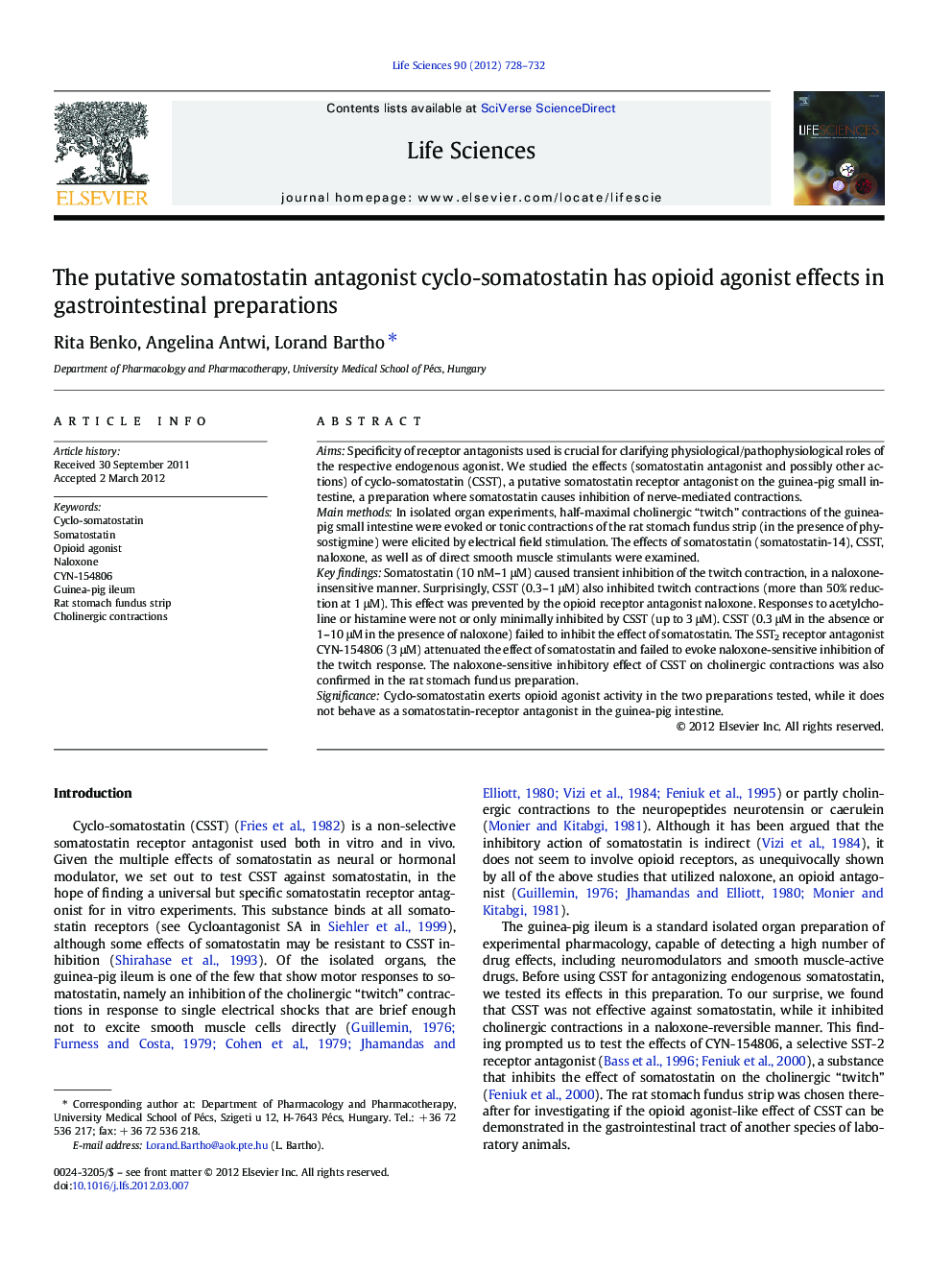| Article ID | Journal | Published Year | Pages | File Type |
|---|---|---|---|---|
| 5842596 | Life Sciences | 2012 | 5 Pages |
AimsSpecificity of receptor antagonists used is crucial for clarifying physiological/pathophysiological roles of the respective endogenous agonist. We studied the effects (somatostatin antagonist and possibly other actions) of cyclo-somatostatin (CSST), a putative somatostatin receptor antagonist on the guinea-pig small intestine, a preparation where somatostatin causes inhibition of nerve-mediated contractions.Main methodsIn isolated organ experiments, half-maximal cholinergic “twitch” contractions of the guinea-pig small intestine were evoked or tonic contractions of the rat stomach fundus strip (in the presence of physostigmine) were elicited by electrical field stimulation. The effects of somatostatin (somatostatin-14), CSST, naloxone, as well as of direct smooth muscle stimulants were examined.Key findingsSomatostatin (10 nM-1 μM) caused transient inhibition of the twitch contraction, in a naloxone-insensitive manner. Surprisingly, CSST (0.3-1 μM) also inhibited twitch contractions (more than 50% reduction at 1 μM). This effect was prevented by the opioid receptor antagonist naloxone. Responses to acetylcholine or histamine were not or only minimally inhibited by CSST (up to 3 μM). CSST (0.3 μM in the absence or 1-10 μM in the presence of naloxone) failed to inhibit the effect of somatostatin. The SST2 receptor antagonist CYN-154806 (3 μM) attenuated the effect of somatostatin and failed to evoke naloxone-sensitive inhibition of the twitch response. The naloxone-sensitive inhibitory effect of CSST on cholinergic contractions was also confirmed in the rat stomach fundus preparation.SignificanceCyclo-somatostatin exerts opioid agonist activity in the two preparations tested, while it does not behave as a somatostatin-receptor antagonist in the guinea-pig intestine.
